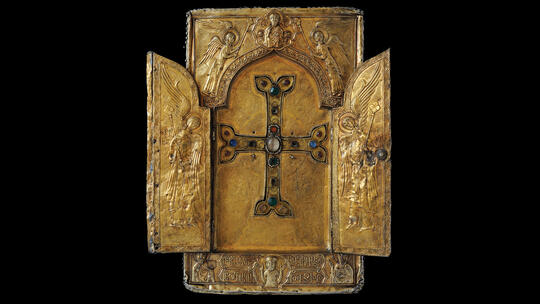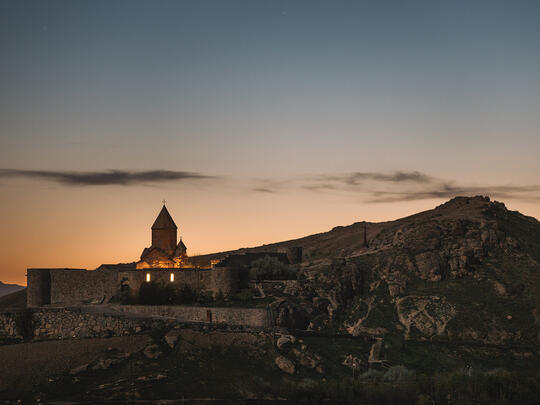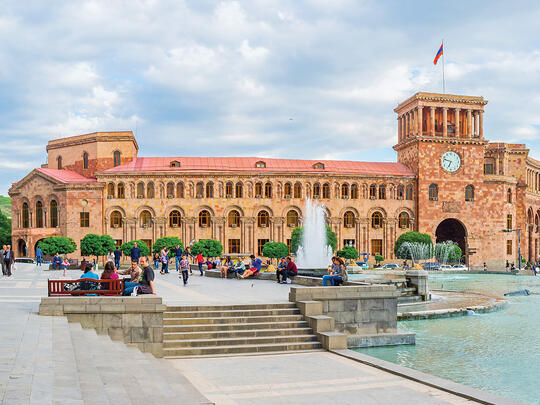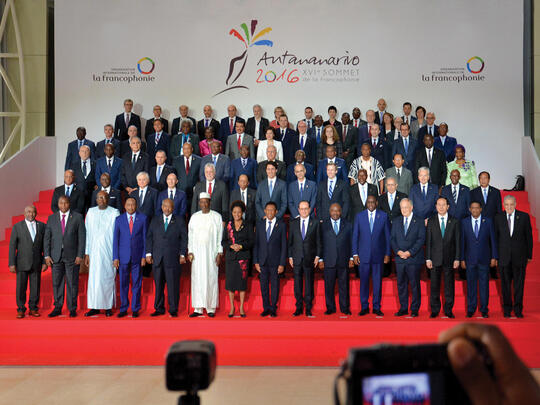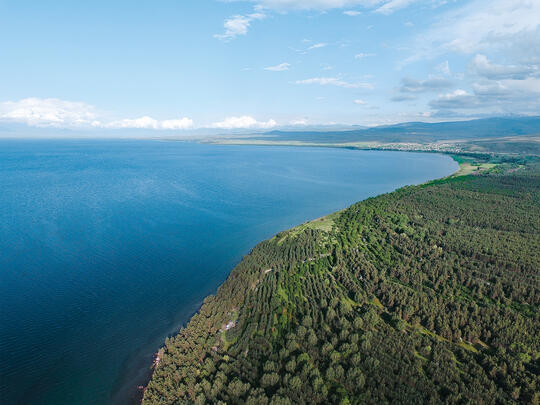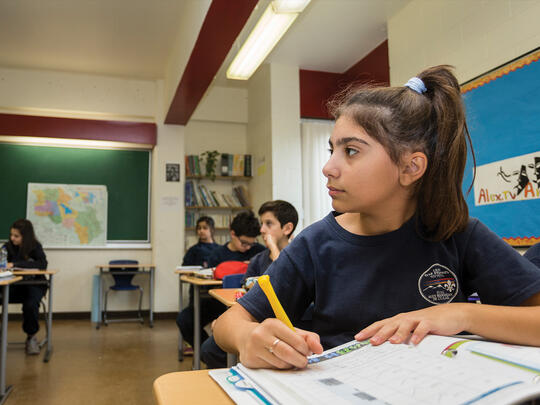On September 21, 2018, Armenian Independence Day, Armenian art and culture will take center stage at one of the largest and finest art museums in the world. The Metropolitan Museum of Art in New York—renowned for its extensive permanent collection of art including ancient Egyptian artifacts, classical Greek and Roman sculptures and paintings from virtually all the European masters–will open Armenia!, the first museum exhibit in America to feature all forms of medieval Armenian art, including a treasure trove of exquisite works from major repositories of Armenian culture around the globe. With more than seven million visitors annually to the museum, the feature exhibit offers an unprecedented opportunity for the world to discover Armenia’s ancient culture, rich heritage and relevance to the world of art.
Curated by Helen C. Evans, the Mary and Michael Jaharis Curator for Byzantine Art at The Met, with the support of Griffith Mann, the Michel David-Weill Curator in Charge of the Department of Medieval Art and The Cloisters, the highly anticipated exhibition is also the first at the prestigious museum to focus exclusively on the art of one Eastern Christian culture in depth, and is already generating buzz throughout the art world.
“I am especially excited—after having first been introduced to the splendid artistic treasures of medieval Armenia some twenty years ago—to help make this important culture and its heritage the focus of a dedicated special exhibition,” says Mann. “We have received wonderful support from lenders, and I know that visitors to the exhibition will be astonished and moved by the works on view.”
The prestigious New York museum is responsible for some of the world’s most critically acclaimed art exhibitions, including ‘The Treasures of Tutankhamen’ and ‘Mona Lisa’—both of which generated more than a million visitors—and more recently in 2015,‘China Through the Looking Glass.’ With prominent placement off the main hall on the first floor of the Museum, Armenia! will mark the first time Armenian art will hold court in the Metropolitan Museum, resonating alongside masterpieces of Greek and Roman art. The exhibition is the product of four years of planning, travel and meticulous preparation, and the culmination of a long-standing interest for Evans, who wrote her doctoral dissertation on manuscripts from the Armenian kingdom of Cilicia and has since devoted much time and effort to featuring Armenian works of art in the medieval galleries at The Met. “It is a great pleasure to be able to present Armenia!, an exhibition whose generous loans from so many major Armenian institutions enables us to demonstrate the quality and breadth of Armenian art. Philippe de Montebello, a former director of the Museum, wrote in his book Rendez-vous with Art that the presence of the khachkar on loan from the Republic of Armenia at The Met offered Armenian art ‘a place in the canon [of art history].’ Our ambition is to have Armenia! encourage everyone to recognize Armenian art’s place in the ‘canon’ of art history.”
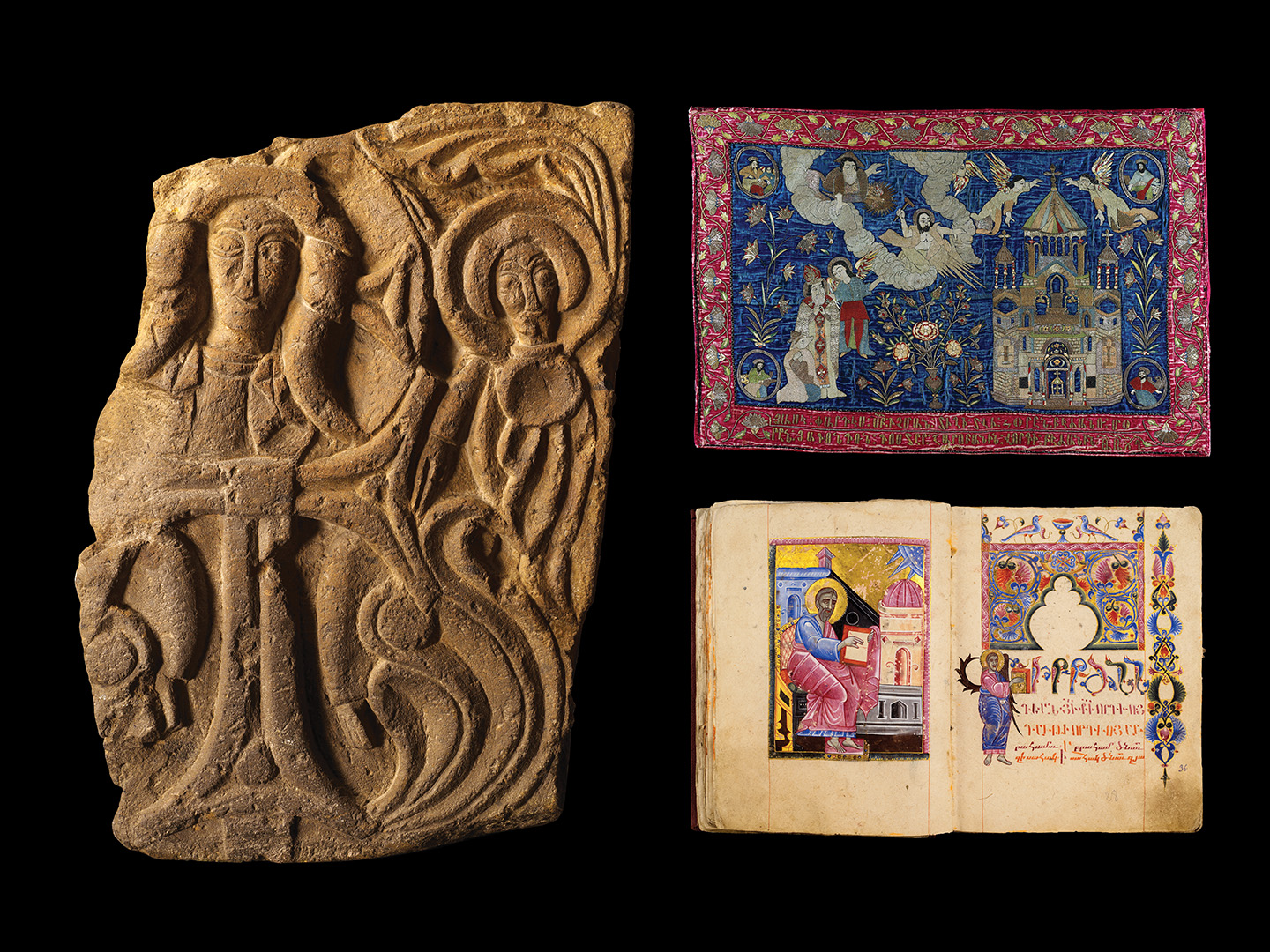
The unique exhibition transports audiences through centuries of medieval Armenian art featuring some of the nation’s most prized artistic treasures and religious artifacts, most of which have never been displayed before in the U.S, including highly valuable pieces that have never travelled outside Armenia. “This exhibition speaks to the Armenian people’s preservation of their own culture,” noted Mann. “I would add that for non-Armenians it will provide a level of awareness of the Armenian culture and the distinctive ways it has interacted with other cultures and the territories that have always surrounded it.”
Among the works to be displayed, there are ornate reliquaries and hangings on loan from The Mother See of Holy Etchmiadzin that represent Armenia’s unique Christian faith, including the True Cross of Ashot II, the reliquary of the Holy Cross of Khotakerats and the reliquary of the Holy Lance. Also not to be missed is an elaborately embroidered depiction of the “vision of the establishment of the great cathedral at Etchmiadzin by Christ with Saint Gregory the Illuminator and King Tiridates in attendance.” Its images represent the unique tradition of the conversion of the Armenians to Christianity at the beginning of the fourth century, making its people the first Christian nation. The rich fabric also conveys the extent of the wealth acquired by Armenian merchants in New Julfa and Constantinople (Istanbul) in the intervening centuries as they dominated trade routes that stretched from China to England, Russia to India and beyond, even reaching America.
Cilicia’s role as the major western end of the Armenian trade routes across the east until its fall in the late fourteenth century will be one of the major themes of the exhibition. Manuscripts from the Matenadaran, ranging from one of the earliest examples of Armenian script to elaborate texts from New Julfa, will help trace the expansion of Armenians from their homeland west to Cilicia and beyond to the Crimea and Italy, then back to Greater Armenia and east to the Armenians in New Julfa, the Armenian section of Isfahan beginning in the era of Shah Abbas. “I am very interested in what cultures exchange with others and how they intersect,” said Evans. “Having studied Byzantine art, I believe Armenia played a very compelling role during the Middle Ages. Armenia is where the Silk Road began if you were coming from the West or ended if you were coming from the East. I thought it was important that this culture be studied more in depth so it would be more broadly appreciated.”
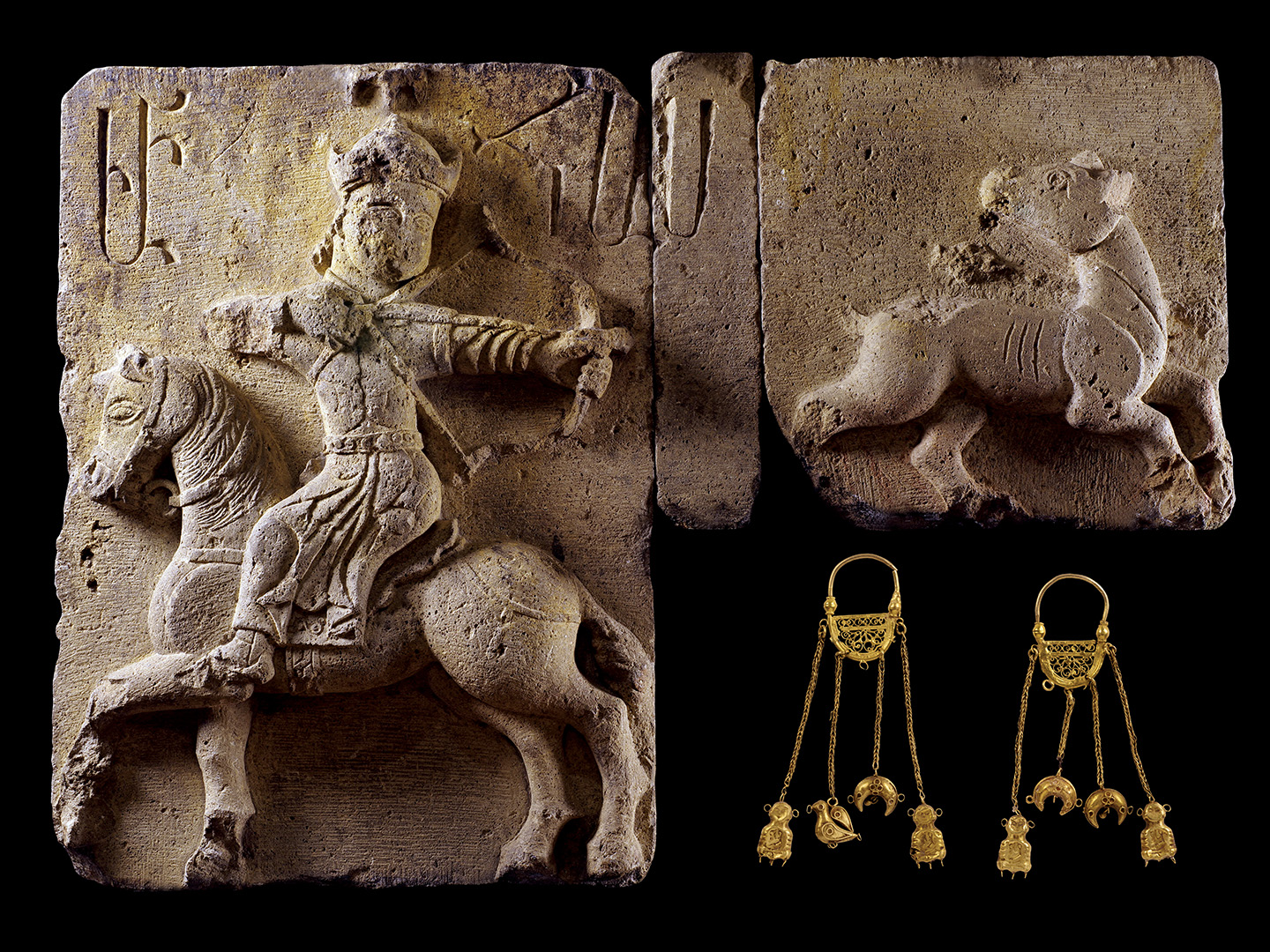
Armenia’s exceptional architectural tradition from its beginnings to the later medieval centuries will also form a large part of the exhibition, with several outstanding scriptural works loaned from the History Museum of Armenia on display, including capitals from early churches and impressive relief carvings and khachkars. The works will be presented together with photographs of their sites by Hrair Hawk Khatcherian to ensure recognition of their original contexts. The History Museum is also lending a jewelry hoard from Dvin that will introduce the importance of the Armenians as a dominating force on trade routes from east to west.
Not limited to works of art from the Armenian homeland, the exhibition seeks to convey the historically broad reach and impact of Armenian art and culture beyond its borders. Impressive works from Europe and the Middle East include a number of exceptional manuscripts from the Cilician era loaned by the Brotherhood of St. James (Jerusalem) that reflect both the greatness of medieval Armenian art and the long history of the Armenian presence in Jerusalem. Among the Brotherhood’s collection are works that have never traveled before by Armenia’s greatest artist, T’oros Roslin. One will join the canon tables by Roslin from The Getty Museum. From Italy, the Mekhitarist Congregation of San Lazzaro degli Armeni in Venice will also lend again to The Met. Their important manuscripts represented medieval Armenia in The Met’s 1997 exhibition The Glory of Byzantium: Art and Culture of the Middle Byzantine Era (A.D. 843-1261). For Armenia!, the fathers under His Eminence Archbishop Levon Zekiyan are sending major works from Skevra, the only known model book to survive, and the first book printed in Armenian in 1512. The Calouste Gulbenkian Museum in Lisbon, Portugal, the Armenian Museum of America, the Alex and Marie Manoogian Museum, and the Eastern Diocese of the Armenian Church of North America are also all participating in Armenia!
After years of attempting to curate an exhibition focused solely on Armenian art, Evans says what made it feasible now was the interest and participation of the Armenian government. From an initial list of all the important works of art that could be moved, Evans and Mann worked closely for several years with the Ministry of Culture of the Republic of Armenia to select 84 works tracing the importance of the conversion of the Armenian people at the beginning of the fourth century and their powerful influence on international trade routes. In addition to the close collaboration with the Armenian government, curators at The Met reached out to a number of specialists and scholars around the world, primarily in the U.S., for their assistance in writing the catalogue of Armenia! Authors will include Helen C. Evans as curator of the exhibition; Christina Maranci, Arthur H. Dadian and Ara T. Oztemel Professor of Armenian Art and Architecture at Tufts University; Ina Baghdiantz McCabe, Professor of History and Darakjian and Jafarian Chair in Armenian History at Tufts University; Dr. Sylvie Merian of the Morgan Library and Museum; and Professor Rachel Goshgarian of Lafayette College, all of whom have actively encouraged recognition of the importance of Armenian art and culture.

To help recreate a sense of Armenian spirituality, the exhibition will also include an evocation of the church at Lake Sevan, where Evans and Mann attended a Sunday service during one of their visits to Yerevan and were so impressed that they later had the church interior photographed in detail by Khatcherian to facilitate its recreation at The Met. Liturgical chants will also be played in the church-like space in order for the public to hear the unique nature and beauty of the Armenian language.
The four-month long exhibition, which will close on January 13, 2019 to include Armenian Christmas, will also feature a vibrant roster of performing arts events, concerts and several educational programs for children and adults, all underwritten by and in collaboration with AGBU. There will also be a full-day symposium on medieval Armenian art and culture and a website with an interactive map of Armenian trade routes. “We are aiming to present an exhibition that Armenians, broadly speaking, will be proud of, as well as an exhibit that will introduce the long history of Armenian art to non-Armenian audiences,” noted Mann. “That will be the key measures of its success.”
Banner photo courtesy of The Metropolitan Museum of Art

